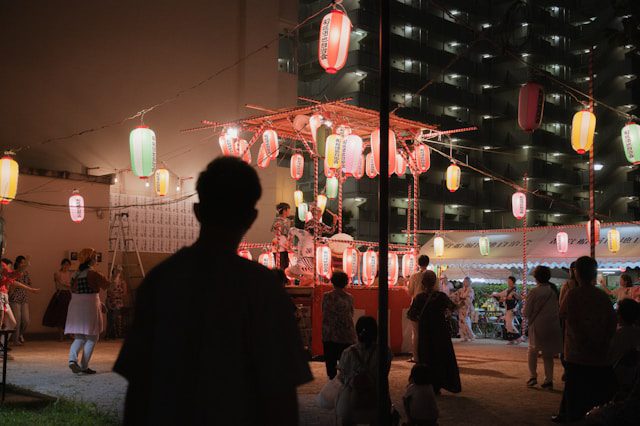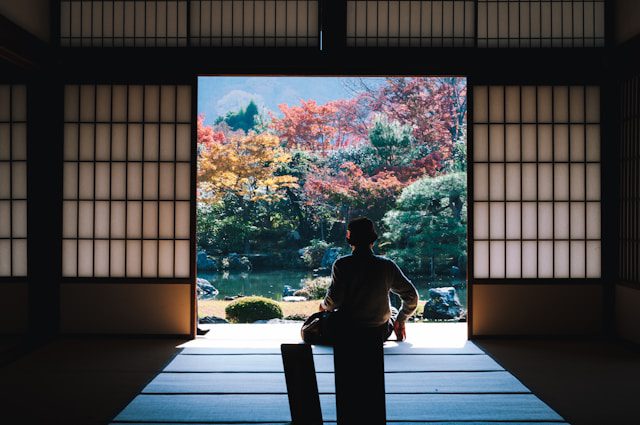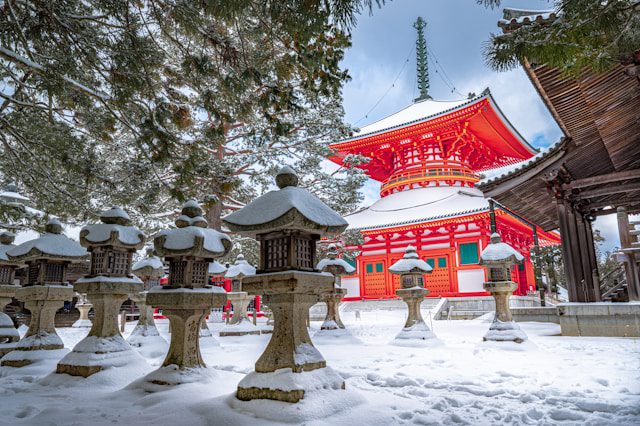February in Japan is a magical time filled with snowy landscapes and vibrant cultural celebrations. With temperatures ranging from chilly in the north to mild in the south, this month offers a unique blend of winter sports and seasonal festivities.
- Is February a Good Time to Visit Japan?
- Weather in Japan
- Cultural Experiences in Japan
- Events & Festivals in Japan
- Top Things To Do in Japan
- Famous Places to Eat in Japan
- What to Pack for February?
- Where to Stay in Japan?
- Average Cost of a Trip to Japan
- Tips for Making the Most of Your Japan Adventure
- Why Choose OneVasco?
- FAQs
Is February a Good Time to Visit Japan?
February is ideal for those who enjoy winter activities and cultural events, as many regions are blanketed in snow while others begin to see early signs of spring. The month brings a beautiful contrast between snow-capped landscapes in higher elevations like the Japanese Alps and the early plum blossoms appearing in southern regions like Kyushu and Okinawa.
Weather in Japan
In February, temperatures across Japan can vary widely depending on the region, with northern areas experiencing significant snowfall while southern regions remain relatively mild.
Most cities experience average daytime highs around 6°C (43°F) to 15°C (59°F), with nighttime lows dropping below freezing in colder areas.
|
City |
Average High (°C) |
Average Low (°C) |
Rainfall (mm) |
Snowfall (cm) |
Humidity (%) |
Sunrise / Sunset |
|---|---|---|---|---|---|---|
|
Sapporo |
0 |
-6 |
90 |
50 |
67 |
06:34 / 17:04 |
|
Tokyo |
10 |
3 |
55 |
0 |
47 |
06:29 / 17:21 |
|
Kyoto |
10 |
2 |
60 |
0 |
64 |
06:44 / 17:38 |
|
Osaka |
10 |
3 |
60 |
0 |
60 |
06:44 / 17:40 |
|
Naha |
20 |
15 |
115 |
0 |
68 |
07:05 / 18:21 |
|
Fukuoka |
11 |
3 |
70 |
0 |
64 |
07:03 / 18:02 |
|
Nagasaki |
8 |
2 |
80 |
0 |
65 |
07:00 / 18:04 |
|
Kagoshima |
15 |
6 |
115 |
0 |
65 |
07:00 / 18:04 |
Cultural Experiences in Japan
February is rich with cultural experiences that highlight traditional customs and seasonal activities.
You can participate in Setsubun celebrations on February 3rd, where people throw beans to ward off evil spirits and welcome good fortune. Plum blossom festivals also begin toward the end of the month, marking the transition from winter to spring.
- Setsubun Celebrations: Join locals at shrines where beans are thrown to drive away demons.
- Plum Blossom Viewing: Admire the early blooms at parks and gardens across major cities like Tokyo and Kyoto.
- Winter Sports: Engage in skiing or snowboarding at popular resorts such as Niseko or Hakuba Valley.
|
Experience |
Best Time to Visit |
Tips & Notes |
|
Setsubun Festivals |
February 3 |
Visit temples like Sensoji for vibrant celebrations; local food stalls are common during this time. It’s a great opportunity to try traditional snacks like ehou-maki (rolled sushi). |
|
Plum Blossom Festivals |
Late February |
Check local events for plum blossom viewings; popular spots include Ueno Park in Tokyo and Maruyama Park in Kyoto, where you can enjoy picnics under blooming trees. |
|
Skiing and Snowboarding |
Throughout February |
Hokkaido offers some of the best slopes; book accommodations early during peak season, and consider renting gear on-site for convenience. |
Events & Festivals in Japan

February is packed with exciting events that showcase both winter and early spring traditions.
- Sapporo Snow Festival (February 4-11): This iconic festival transforms Sapporo into a winter wonderland filled with impressive snow sculptures.
- Yokote Kamakura Festival (February 15-16): Experience traditional snow igloos where visitors can enjoy sweet sake and rice cakes.
- Nagasaki Lantern Festival (January 29 – 12): Thousands of lanterns illuminate Nagasaki’s streets, creating a festive atmosphere celebrating Chinese New Year.
|
Event |
Dates |
Location |
|
Sapporo Snow Festival |
February 4-11 |
Sapporo |
|
Yokote Kamakura Festival |
February 15-16 |
Yokote |
|
Nagasaki Lantern Festival |
January29-February12 |
Nagasaki |
|
Otaru Snow Light Path Festival |
February 8-15 |
Otaru |
|
Akita Kanto Winter Festival |
February 15-16 |
Akita |
|
Shizuoka Strawberry Festival |
Throughout February |
Shizuoka |
Top Things To Do in Japan
There’s plenty to keep you entertained during your visit to Japan in February.

- Skiing at Hokkaido Resorts: Enjoy world-class powder snow at resorts like Niseko or Furano.
- Relaxing at Onsen: Experience traditional Japanese hot springs, especially popular during winter months.
- Visiting Historical Sites: Explore temples and shrines adorned with snow, offering a serene atmosphere.
- Food Tours: Indulge in seasonal delicacies such as nabe (hot pot) and fresh seafood.
- Plum Blossom Viewing: Visit parks known for their early-blooming plum trees as spring approaches.
- Participating in Local Festivals: Engage with community celebrations that showcase traditional Japanese culture.
- Exploring Winter Markets: Discover local crafts and seasonal foods at various winter markets throughout cities.
- Taking Scenic Train Rides: Enjoy breathtaking views of snow-covered landscapes from trains like the Shinkansen.
- Shopping for Souvenirs: Find unique gifts at local shops specialising in traditional crafts.
- Enjoying Night Illuminations: Experience beautiful light displays often found in urban areas during winter evenings.
- Hiking Winter Trails: Explore scenic trails that offer stunning views of mountains blanketed in snow.
- Cultural Workshops: Participate in workshops that teach traditional crafts such as pottery or calligraphy.
- Visiting Museums: Learn about Japanese history and culture at museums featuring winter-themed exhibits.
- Exploring Coastal Cities: Visit cities like Kanazawa known for their beautiful coastal views even during winter months.
- Attending Art Exhibitions: Discover contemporary art exhibitions held throughout major cities during this time.
Famous Places to Eat in Japan
Japan’s culinary scene is diverse, reflecting its rich culture and seasonal ingredients.
- Sukiyabashi Jiro (Tokyo): Renowned sushi restaurant famous for its exquisite omakase experience.
- Ichiran Ramen (Tokyo): This popular ramen chain is known for its flavorful tonkatsu broth served in individual booths.
- Kaiseki Yoshizumi (Kyoto): Traditional multi-course dining experience highlighting seasonal ingredients.
- Mizuno (Osaka): Famous for its okonomiyaki, a savoury pancake filled with various ingredients.
- Naritaya Ramen (Fukuoka): Specializes in Hakata-style ramen with rich pork bone broth.
- Sushi Saito (Tokyo): Exclusive sushi spot is known for its meticulous craftsmanship and fresh fish selection.

|
Dish |
Best Places |
Price Range |
|
Sushi |
Sukiyabashi Jiro |
$300+ per person |
|
Ramen |
Ichiran Ramen |
$10-$15 |
|
Kaiseki |
Kaiseki Yoshizumi |
$100+ per person |
|
Okonomiyaki |
Mizuno |
$10-$20 |
|
Hakata Ramen |
Naritaya Ramen |
$8-$12 |
What to Pack for February?
Packing appropriately is key for a comfortable visit during this cold month.
Clothing
- Warm layers including sweaters, thermal tops, and insulated jackets are necessary due to low temperatures.
- Waterproof boots are recommended for navigating snowy or wet conditions comfortably.
Accessories
- Hats, scarves, and gloves are essential to protect against cold winds.
- An umbrella or waterproof jacket may be useful given occasional rain or snow showers.
Electronics
- A portable charger helps keep devices powered while exploring.
- A camera is ideal for capturing stunning winter landscapes and festival moments.
Documents
- Ensure your passport is valid for at least six months beyond your stay; check visa requirements based on nationality.
- Travel insurance documentation should be kept handy for emergencies during your trip.
For assistance with understanding all necessary documents required for your travel plans, OneVasco can help ensure you have everything sorted out smoothly.
Other Essentials
- Bring personal medications as pharmacies may not stock familiar brands.
- Snacks can be useful while travelling between destinations or during long excursions.
Where to Stay in Japan?
Choosing suitable accommodations enhances your travel experience based on preferences and budget considerations.
Luxury
- The Peninsula Tokyo: Offers luxurious rooms with stunning city views and top-notch service.
- Aman Tokyo: Known for its tranquil atmosphere blending modern luxury with traditional Japanese aesthetics.
- Park Hyatt Kyoto: Features elegant accommodations surrounded by nature near historical sites.
Downtown
- Shinjuku Granbell Hotel (Tokyo): Conveniently located near shopping areas with modern amenities.
- Hotel Granvia Kyoto: Directly connected to Kyoto Station, making it easy to explore the city.
- Swissotel Nankai Osaka: Located above Namba Station, providing easy access to attractions around Osaka.
Local Area
- Ryokan Yoshida-sans (Kyoto): A traditional inn offering an authentic Japanese experience with tatami rooms.
- Kinosaki Onsen Ryokan (Hyogo): Famous for its hot springs; guests can enjoy multiple public baths nearby.
- Gion Hatanaka (Kyoto): Situated near Gion district offering traditional meals along with accommodation options.

Average Cost of a Trip to Japan
Budgeting effectively ensures a smooth travel experience without unexpected expenses during your trip to Japan.
- Accommodation: Expect costs ranging from $30 per night at budget hostels to $500+ at luxury hotels depending on location and amenities offered.
- Food: Meals can range from $5-$15 at casual eateries to $100+ at high-end restaurants specializing in kaiseki dining or sushi omakase experiences.
- Transportation: Train fares vary widely; budget around $20-$50 per day depending on travel frequency within cities or between regions using JR Pass options.
- Activities: Entrance fees typically range from free access at public parks or temples up to $30+ for special exhibitions or guided tours; budgeting around $30-$100 per day allows flexibility for various experiences.
- Shopping: Souvenirs can vary greatly; allocating around $50-$100 should cover typical purchases such as local crafts or speciality foods without overspending.
Tips for Making the Most of Your Japan Adventure
Practical insights can enhance your travel experience while exploring Japan’s unique culture and environment.
Local Etiquette
- Bowing is a common greeting; understanding basic phrases like “Arigatou” (thank you) will enhance interactions with locals.
- Remove shoes when entering homes or certain establishments; look out for designated areas provided for this purpose.
Safety and Health
- Public transportation is generally safe; however, always keep an eye on personal belongings, especially during peak hours on trains or buses.
- Familiarize yourself with emergency numbers such as police (110) or ambulance/fire services (119).
Dress Code
- Dress modestly when visiting temples or shrines; wearing appropriate clothing shows respect towards local customs.
- Layering clothing is advisable due to fluctuating temperatures throughout the day; consider versatile outfits suitable for both indoor settings and outdoor activities.
Plan Ahead
- Research local events happening during your stay; participating enhances cultural immersion while avoiding crowds associated with peak tourist seasons helps optimize experiences!
- Make reservations early if planning visits to popular attractions or restaurants known for limited seating availability!
Transportation
- Utilize public transport systems like trains which are efficient; consider purchasing a JR Pass if travelling extensively between cities!
- Familiarize yourself with local transport apps that provide real-time updates on schedules ensuring smooth transitions between destinations!
Currency
- The currency used is Japanese Yen (JPY); ensure you have cash available as smaller shops may not accept credit cards!
- ATMs accepting international cards are widely available, but check the bank fees associated before withdrawing funds!
Why Choose OneVasco?
OneVasco makes visa applications effortless! Our expert team manages the entire process allowing you to focus on your journey! Enjoy stress-free travel with fast visa approvals!
- Expert and Personalized Support
- Efficient and Hassle-Free Process
- Real-Time Tracking and Updates
- Transparent Communication
- Trusted by Millions
FAQs
What are the best things to do in Japan in February?
In February, visitors can enjoy skiing in Hokkaido, participate in Setsubun celebrations across shrines, explore plum blossom festivals, indulge in seasonal cuisine like nabe hot pots, and experience vibrant winter festivals throughout various cities.
Is Japan cold in February?
Japan experiences cold weather during February, particularly in northern regions like Hokkaido where temperatures can drop below freezing; however, southern areas like Okinawa remain relatively mild compared to other parts of the country during this time.
What can I wear in Japan in February?
Layered clothing is recommended due to varying temperatures across regions; warm sweaters, insulated jackets, hats, scarves, and gloves are essential, while comfortable waterproof footwear will help navigate snowy conditions easily!
Is it expensive to visit Japan in February?
While costs vary based on personal preferences regarding accommodation choices or dining options, overall budgeting around $100-$200 per day should cover accommodation meals and transportation activities without overspending significantly!
How safe is Japan?
Japan is generally considered one of the safest countries globally; however, standard precautions should still be taken regarding personal belongings, especially when travelling through crowded areas!
What can I see in Japan during February?
Visitors can see beautiful snow-covered landscapes, particularly around Hokkaido and participate actively in local festivals such as Setsubun enjoy early blooms from plum trees while indulging in delicious seasonal dishes available throughout different regions!
Will it rain or snow in Japan during February?
Precipitation levels vary by region; northern areas often receive significant snowfall while southern regions may experience occasional rain showers—it’s advisable to always check forecasts before planning outdoor activities!
What major events & festivals occur in Japan during February?
Major events include the Sapporo Snow Festival showcasing impressive ice sculptures Yokote Kamakura Festival featuring snow huts illuminated beautifully along various plum blossom festivals marking the arrival of spring across different locations!





















